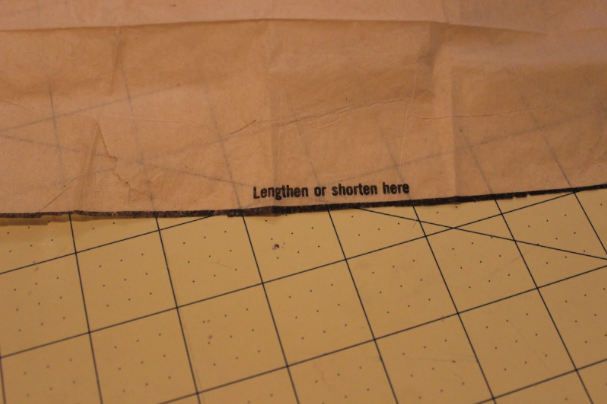
The term “petite” usually refers to women 5’4” and shorter. Commercial patterns are sized to fit a 5’5” woman, so it’s no surprise that women who struggle to find clothing that fits properly in clothing stores will also struggle to identify clothing patterns that fit without making adjustments. Of course, if you are petite and have trouble getting great clothing in stores, sewing for yourself is a wonderful way to add properly fitting garments to your wardrobe, without having to rework finished garments (which can often be more frustrating than simply starting from scratch). Unfortunately, there’s no line of petite sewing patterns sized specifically for petite women (though if you are petite and plus-size, be sure to look for Petite Plus patterns, which are designed with that figure in mind). The good news though, is that most patterns will only require a few small adjustments to fit properly.
If you are just getting into sewing for yourself, consider your figure and where you might need to make adjustments before cutting your fabric. As a petite woman myself, I know that I don’t usually have an issue with garments fitting me in the shoulders and across the bust. However, length will always be an issue. If you are short-waisted, length might be less of an issue when it comes to pants or skirts. It all depends on your individual body proportions.
Once you know where you need to make adjustments, consider the proportions of the original design. If you need to take 4 inches off the bottom of a skirt, simply cutting off the bottom might ruin the original lines of the garment. Instead, you’ll want to spread the difference across the entire piece; you might take the hem up 1 ½” and adjust by ¾” at two places more in the middle of the skirt.
If the adjustment is minor (perhaps the shoulder seams are just a bit off), it can be adjusted in one place. It could be tempting to adjust at the center back, but only do so if you need to adjust the neckline as well. Otherwise, you’ll want to make the adjustment at the center of each shoulder to avoid altering the neckline.
If the pattern is more uniformly too big, try grading down a size, either by using the cut and spread method or the shifting method. Once you have the pattern closer to your actual size, you can then make the more minor fit adjustments.
Although it takes a bit of extra time, when it comes to petite sewing, making a muslin is a great way to experiment with pattern adjustments and overall fit without sacrificing your expensive fabric. Making one is an especially good idea if you are unsure of your skills in adjusting patterns to fit your figure. Be sure to take notes about the adjustments you made to serve as a starting point for your next sewing project.
Most importantly, don’t forget all the things you’ve learned about dressing yourself with ready-to-wear; the same fashion rules for petite women shopping for clothes also apply in petite sewing. When choosing fabric, look for a smaller print that will not overwhelm your frame. It’s hard to admit that a fabric you love has too much going on to work on your frame, but you’ll thank yourself later (at least, that’s what I keep telling myself!). And of course, when choosing a sewing pattern, a fitted garment will probably flatter your figure more than a loose, flowy one.
If you’re petite, I’d love to hear your tips and tricks for sewing garments to fit your frame!
Come back to the Bluprint blog this Tuesday to learn how to sew lingerie fabrics with ease.

I am petite and have saved a few garment styles I would like to incorporate with patterns I already have. If this is possible?